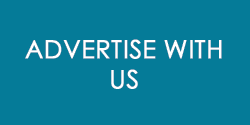With the return of school comes the return of some nasties such as nits! Blood sucking, creepy, crawling extremely contagious little parasites. They cling to hair with their claws and feed by sucking blood from your scalp. The mere thought of it makes you scratch your head! Unfortunately, they are extremely common, especially in school age children. Many people with head lice don’t itch so it’s important to actually look for them. Start looking at the back of the neck, or nape, as that’s where they will first be found, then the entire scalp. Head lice themselves can be found on the scalp or the eggs (nits) can be seen on the hair shaft, usually 1 – 1.5 cms from the scalp. They are distinguished from dandruff (and sand and glitter) as they’re not easily brushed away and are very adherent to the hair shaft. Itching yet?!
If you can’t see any but you are pretty sure your child has been exposed to them or has an unexplained itch, ‘wet combing’ is another technique. Wash and condition the hair as normal. Once the hair is easily combed without pulling, slowly drag a ‘nit’ comb through the hair, checking what is left on the comb after each stroke. Nit combs are specially made – they can be plastic or metal and the teeth are very close together. Once you detect lice, they need to be treated and you will need this comb again.
Nit myths busted
Contrary to popular belief, they are wingless and unable to jump so are only spread by crawling, with direct head to head contact or sharing of hats and the like.
Again, contrary to popular belief, you don’t need to treat the entire family for head lice. In fact it’s preferable that you don’t as head lice are developing resistance to the variety of products used. Simply treat the child who has the lice and anyone else in the house that you think may have them. It’s also important you keep your child home from school until the lice are treated.
Again, another popular misconception is that you need to wash all sheets, towels, hats and so on. Not true thankfully, as head lice and eggs don’t survive long away from the human scalp. You also don’t need to treat the cat or dog. But it would be worthwhile changing the pillowcase of the affected child as the droppings will have collected there… ewwww!
Treatment
You can treat head lice with either an insecticide or via the ‘10 day hair conditioning treatment’.
Insecticides:
Insecticides should not be used on babies under six months, pregnant or breastfeeding women, or people with asthma, epilepsy, insecticide allergies, scalp conditions or very sensitive skin. There are three types of insecticide that are proven safe and effective for the eradication of head lice. These are readily available from the pharmacy. They contain either permethrin, pyrethrin or malathion. Some other treatments may not have been properly tested and may be ineffective, expensive or even unsafe. Most products suggest reapplication seven days later to catch any remaining nits.
10 day hair conditioning treatment:
Liberally apply hair conditioner to the head and comb thoroughly with the nit comb. Conditioner slows down the lice and allows you to ‘catch’ them. Once the entire head is combed, this process needs to be repeated every two days for 10 days to allow for the entire lifecycle of the head lice.
Prevention is always better than cure
- Tie long hair back – especially for school or activities with close contact with other children.
- Hair spray hair and gel – this doesn’t repel lice, but decreases fly-aways for lice to grab onto.
- Avoid sharing combs and hats and close head to head contact.
Repellents are not recommended. They can cause irritation to the scalp and have not been shown to be effective.






















